I’ve written a lot recently about Twitter verification, primarily because they claim it’s more open to users than ever before, and they added a form you can fill out to request it. If you want to know what I think about the verification specifically, or if you want a step by step process to submitting a verification request, check out those other articles.
This post is for you when the inevitable happens; you submitted a verification request and have been denied. As I mentioned before, it’s pretty likely that verification is still going to be as obtuse and as limited as ever. They haven’t functionally changed the description of verification, nor have they broadened the accounts that are considered “people of interest” and worthy of verification. This is going to lead to a lot of people applying out of hope now that the form is public, and getting rejected when Twitter recognizes that they don’t have anything noteworthy about their accounts.
Now, I’m not saying that you, dear reader, are not noteworthy. Everyone is special in their own way. All I’m saying is that Twitter has decided that you haven’t met the minimum criteria of verification.
Normally the first item I would address here is the minimum requirements, like having a verified email and verified telephone number tied to your account. However, in this case, you need to meet all of those requirements before you can even submit a verification request. So, we can eliminate those as reasons you were rejected, and look to the next possible reason.
Re-Optimize the Profile
What I mean by this is that there are elements of your profile that are required to look a specific sort of way for verification, but are not something an algorithm or a mechanical check can identify. They can make sure you have a profile picture, but they can’t make sure it’s a picture of you before you submit. So, let’s look again at those guidelines, and maybe this time you can make sure you actually adhere to them, shall we? I’m sorry, that was rude; your settings are probably perfectly fine. Still, let’s look them over.
Images: there are to images you need to optimize on your Twitter account in order to be approved for verification. These are, obviously enough, your header image and your profile picture. What they look like will depend on what kind of account you have.
- For individuals, your profile picture should be a good professional headshot, action shot, or candid shot of you yourself. Here are a few examples. You’ll notice that the last one, del Toro, is not actually a picture, but it is a fantastic representation of what he’s all about as an artist and a person.
- For businesses, your profile picture should generally just be your logo or, in some cases, your mascot. Again, some examples.
In both cases, you have more flexibility with your header image, but it should still be something that fully represents you or your aesthetic in some way. If you’ve been denied verification, I recommend switching to something conservative, such as a convention audience, a picture of your storefront, or a product showcase.
Description: your description should be a short, 1-2 sentence indication of who or what you are. Take a look at the examples I posted above. All of them have good descriptions. I would venture to say that Moz has one of the worst up there; they try to cram in three distinct sentences, though only the first and maybe the second are necessary. They also miss the chance to put a link to another social presence or a landing page there. Del Toro’s is a little useless, but clearly referencing something that happened since he was verified. Of course, I don’t think someone as famous as Guillermo would be hard pressed to get verification in the first place.
The point is, you want something that fits you. All of my examples are of well known brands and individuals, but you aren’t likely able to ride that train. You need to pay more attention to your choice of words, more than anything. Don’t use the typical overblown non-descriptors, like “guru” or “junkie.” In fact, just take a look at this list and don’t do any of them.
Expand Your Twitter Usage
Honestly, though, if you’ve been denied verification, chances are it wasn’t because of your images or your bio. There are two other reasons it could be, both much more likely. One of them is that you’re not considered active enough or active in the right ways on Twitter. The other will be covered in the next section, and has to do with who you are as a person.
When you think about Twitter, what do you think about? How do you use the site? If all you’re doing is posting banal social updates, selfies, and pictures of your food, you’re probably not going to qualify for verification unless you’re a very high profile person, like an actor or musician. If all you do is aggregate content, and don’t provide anything of your own, you’re probably not considered to be bringing enough value to the site. That’s just how it goes; verification is selfish on the part of Twitter, so if you can’t swing it, you won’t get it. That said, I have three general goals you can strive for before you submit another verification request.
Use the site more often. Maintaining a consistent level of activity is important, both for your hopes for verification and for your growth as a personality or as a business on Twitter. Generally, you’re going to want to make 2-3 posts per day, and by that I mean posting images, posting videos, posting links, or just starting conversations. Beyond that, you should also retweet 2-3 items per day, ideally items that are of great interest to your users and not just to you.
That’s not all, though. You also need to pay attention to the people who are responding to your tweets. Once you have an audience, people will respond. They’ll retweet, they’ll like, and most importantly, they’ll comment. It’s your job to make sure you respond to those comments, to keep a conversation going. In particular, you need to make sure to engage as many people as possible, so that you can keep growing your audience.
One part of engagement is the statistics behind it. For example, audiences in general tend to have peaks and valleys of activity. Peak hours are a great time to tweet, but you need to figure out when those peak hours are. There are tools and methods to do so, at least.
You should also make sure to use hashtags with frequency. A lot of sites will say that you should always use them, but I recognize that now and then, there are some tweets that don’t need them.
In general, follow as many of these tips as possible, to get as much engagement as possible out of your audience.
Second up is growing a following. To a certain extent, being active and engaging is going to grow your audience, but you can do more. You need to advertise your Twitter account on other sites. You need to pay for ads. Most importantly, you need to take advantage of all of the tools Twitter gives you to dig into marketing. I’m not just talking about ads and analytics. I’m talking about things like hashtags, which are more than just what you put in your posts.
Good hashtags are communities in and of themselves. People hang out in the trending tags, holding discussions. You can identify when you have tags with a following, and you can browse them looking for people you want to engage. Specifically, you want to look for industry influencers.
Network with industry influencers. These are people who have large audiences of their own, who post a lot of content and engage their users, who run high profile businesses, and likely who have verification of their own. Now, one thing you might take a look at is the influencers you know about. In SEO, I might look to Rand Fishkin or Neil Patel, and see what their Twitter accounts look like. Are they verified? If the big names in your industry aren’t, you probably don’t have a chance.
When you identify influencers, you need to start trying to engage with them. Start by retweeting and commenting on their content. Once you’ve been at that a while, start to tag them in content you post that you think they would like. You could eventually even send them a DM, looking to get a closer relationship going. You just have to take it slow, don’t come on too strong. It’s a relationship, after all. Really, just read this.
Expand Your Brand Reputation
Please, don’t skip this section if you’re an individual. Ever heard of a personal brand? High profile entrepreneurs, leaders, and influencers all have personal brands. It’s about portraying, not who you are, but who your audience wants you to be. It’s your own personality and inclinations, writ large. They like you for your taste in music, so you share extra music posts, and you study the kinds of music that are most attractive to your audience, and share more of those. They like you for your jokes, so you research and come up with better jokes.
Business brands, of course, are doing something similar without the personality to draw on. Or, rather, while they don’t have the personality of an individual to rely on, they can still grow based on the personality and voice they want their business to have. Think Apple and their haughty, “we’re excellent” vibe they give with their technology. Think about the vibe Dollar Shave Club gives off, with manliness and hygiene as core focuses.
Regardless, this is perhaps one reason why your verification on Twitter wasn’t approved; you don’t have a brand presence out in the wider world. Twitter doesn’t verify “Twitter celebrities” or anything. You won’t find @dril with the blue checkmark next to his name. When Twitter checks to verify your account, they check to see what kind of a presence you have. Are you someone famous, or just a low-tier marketer looking to get a quick boost to your social SEO?
I have two general focuses you can use to improve your position in the greater internet. The first is at home, on your own website. The second is abroad, in other authoritative locations.
Grow a better website. Your website is your home base on the web, and it’s where all of your marketing will funnel into. Even individuals should have websites, showcasing whatever it is you do best. In addition to having a nicely designed, popular-looking website, however, you need that website to be a portfolio.
No, I’m not talking about a portfolio of your work, though you should have that as well. I mean you should have a section for your contributions, your mentions, and your presence around the web. Guest post on a high profile site? Link to that post. Mentioned in a news article? Link to it. Any time you’re mentioned in a positive light, or you’re added as a contributor to a site, add those links.
The second part is to gain a position on other influential websites. An individual might look for guest posting opportunities, or chances to become a contributing author. Whenever your name shows up on a high profile site – like Forbes, or Moz, or Huffington Post, or what have you – it’s a benefit to your brand.
At this point, I would focus on guest posting more than becoming a contributor. You don’t necessarily need the responsibility, and Twitter isn’t going to dig deep. Breadth of experience and relevance is better than depth, with a few exceptions.
The larger and the higher quality your web presence, the better a shot you have at more verification. Fame on its own can get you verified, so it’s well worth shooting for.
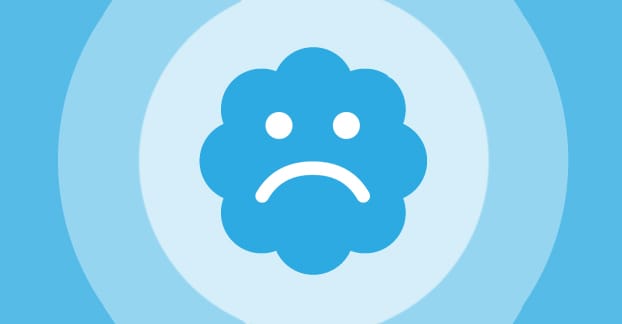
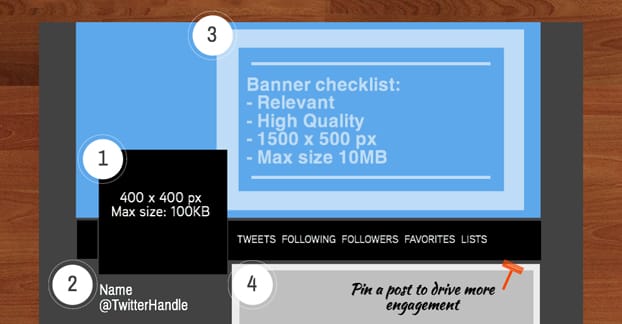

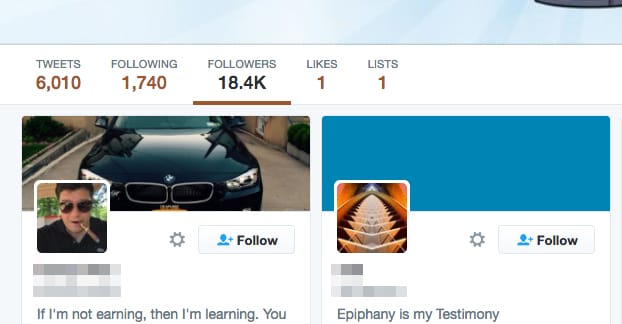
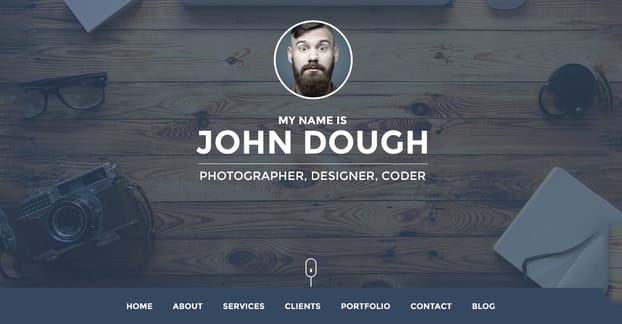
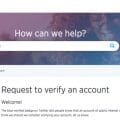

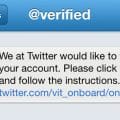

Nice article. Hope they will verify my twitter account.
Good piece, thanks. How can I appeal for the verification reconsideration? I tried through their Verification form but because I was previously denied it, I can do anything there. Equally when going to DM Twitter Support, it doesn’t recognise my query and the bot keeps answering “I’m not sure what you mean. Try selecting one of the options from the list below in order to get started”